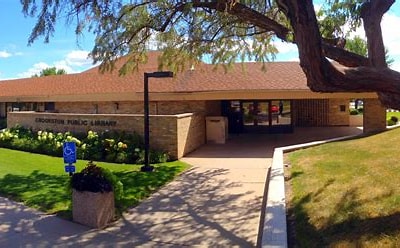The East Central Regional Water District (ECRWD) out of North Dakota is looking to move forward with a long-term water supply project throughout Polk, Norman, and Clay County in Northwest Minnesota. The project would bring clean water to an estimated 5,328 Rural Minnesotans while limiting maintenance repairs and fixes for smaller towns.
The two cities that would benefit from the project in Polk County are Climax and Nielsville. Regardless of the decisions made in Norman and Clay County, Polk County can proceed forward with their portion of the project, and decisions for Climax and Nielsville are not contingent on what Norman and Clay County decide to do. The ECRWD and community members from Climax and Nielsville visited the Polk County Board of Commissioners earlier today, seeking American Relief Program Funding (ARP) to help cover the costs. The Project portion in Polk County would be to construct pipelines from one of the Water District’s plants, across the river to Climax and then down to Nielsville to reduce the need to maintain the city’s water towers and bring safe, clean water to those residents.
In total, Polk County has roughly $6.1 million in ARP Funding that it can use before the end of 2024. The ECRWD is asking the board of commissioners for roughly $1.9 million to cover 75% of the project cost. The communities of Climax and Nielsville would then have a local share of roughly $700,000 to cover the overall cost of the project portion in Polk County that is estimated to be around $2.6 million.
With many unknowns in Norman and Clay County, and the Polk County Board of Commissioners unsure how much money they’d like to dedicate to the project, they have tabled the matter until more discussion can be had.
Polk County Administrator Chuck Whiting discussed why the board isn’t quite ready to give ARP Funding for the project. “The communities have now met a couple of times with the board seeking almost $2 million in ARP Funds to assist in the project,” said Whiting. “The project certainly seems to have merits, but to what degree of help the board wants to pursue is the big question at this point. We have a limited amount of ARP Funds that we can use, so I will be working with some of the staff people on the project to better understand the financials and what an appropriate dollar amount would be from the county. The project certainly has merit, and it could lead to improvements in the future with water supply to that area of Polk County.”
General Manager of the ECRWD Neil Breidenbach discussed the benefits of having rural water and why he’d like to see the project move forward. “We have sixteen cities that have gone this route with us over the years, and it’s been a great benefit to them,” said Breidenbach. “The need here is very extreme, especially for the rural customers and the quality of water they currently have. By doing this, they’ll have fewer troubles with their appliances, and it’s just a great benefit for people. Water is a necessity, and if you have harsh water, it’s not good for anyone.”
As of now, the city of Climax is planning on moving forward with the project regardless of what the county decides. Climax has received some funding for the project and feels they need to make the change for the sake of the town. The water bill for Climax residents if the project is completed is estimated at $85 a month without the county’s help and $60 with the county’s help. It is estimated that both those options would be cheaper for the residents in Climax than the alternative, which is constant maintenance on the city’s water tower and wells in the years to come.
In Climax and Nielsville, an estimated 356 people would benefit from clean and rural water from this project. Breidenbach said it would be an excellent time to conduct the project, and he is hopeful to hear back from Polk County sooner rather than later. “As soon as possible would be good, but we’re thrilled to get any assistance on it whenever,” said Breidenbach. “This is a great time to do it because everyone is looking at these small towns and infrastructure projects, and the ARP money can help get these done. It would be a good thing for all the communities up and down the valley.”
Whiting said the board would review different factors and continue to communicate with the ECRWD about moving forward with the project. The board believes in the project; it is just a matter of determining how much money they can give.





